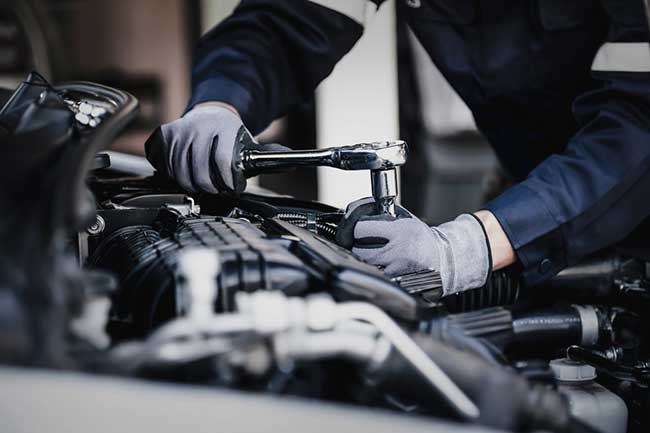All Categories
Featured

When it pertains to lorry repair work or upgrades, one of the most crucial choices you'll face is whether to choose Original Tools Maker (OEM) components or aftermarket parts. Both options offer unique benefits and downsides, so understanding the distinctions in between them is essential for making an educated decision. In this short article, we'll check out the advantages and limitations of OEM and aftermarket parts to help you choose which is ideal fit for your automobile.
What Are OEM Parts? OEM parts are produced by the same maker that made the initial elements in your lorry. These components are created to satisfy the precise specs of your cars and truck, guaranteeing they are an exact fit and use the very same performance as the parts that came with the car when it was initial developed. OEM components are usually considered the "manufacturing facility criterion" since they come directly from the cars and truck's manufacturer or a qualified distributor.

One of the major benefits of using OEM parts is their ensured high quality. Since these components are made to the same requirements as the originals, they typically provide an excellent fit and dependable performance. In addition, lots of OEM parts feature a warranty, offering you satisfaction that you'll be protected in instance of problems.
What Are Aftermarket Components? Aftermarket components are made by third-party makers that are not affiliated with your automobile's initial producer. These parts are made to fit a wide range of lorries and are usually less costly than OEM components. Aftermarket components can be made use of for regular fixings or upgrades, and they typically supply a wider series of alternatives contrasted to OEM parts.

The primary appeal of aftermarket parts is their affordability. They are generally valued reduced than OEM parts due to the fact that they are produced by independent manufacturers. Furthermore, aftermarket parts might give far better performance or extra attributes not available in OEM options. As an example, aftermarket exhaust systems, brake pads, and suspension components frequently use improvements in efficiency or aesthetics that may not be located in OEM components.
Benefits of OEM Components. Precision and Compatibility: OEM components are designed specifically for your car's make and design, ensuring they fit flawlessly and do to the exact specifications needed. Service Warranty Coverage: Lots of OEM parts come with service warranties, offering insurance coverage in situation of problems or premature failing. Quality control: Because OEM components are made by the original manufacturer, they go through the same rigorous quality assurance criteria as the parts installed in your car when it was initial developed. Resale Value: If you prepare to market your cars and truck, having OEM components can aid preserve its resale value, as possible customers might be a lot more curious about an automobile that has actually been repaired with initial parts. Advantages of Aftermarket Parts. Price Savings: Aftermarket parts are normally less costly than OEM parts, which can be a significant advantage if you're on a budget plan or want to conserve money on repairs. Selection and Personalization: Aftermarket parts provide a larger variety of alternatives, consisting of efficiency upgrades and visual enhancements. If you desire to increase horse power or improve your vehicle's look, aftermarket choices can supply unique remedies. Availability: Aftermarket components are typically less complicated to discover than OEM components, especially for older lorries that might no much longer have easily available OEM components. Performance Improvements: Some aftermarket parts are created with efficiency in mind, such as high-performance brakes, air filters, or exhaust systems. These parts can improve your automobile's total efficiency and driving experience. Downsides of OEM Components. Greater Cost: One of the most considerable downside to OEM components is their expense. They are usually a lot more costly than aftermarket alternatives, which can include up quickly if your car needs several repair services. Minimal Modification: OEM components are created to recover your automobile to its original specs, suggesting they might not offer the very same series of customization alternatives as aftermarket parts. Availability Problems: Depending on the age of your lorry, particular OEM components may be harder to find or ceased, making fixings harder. Drawbacks of Aftermarket Components. Inconsistent Top quality: While several aftermarket components are of excellent quality, others might be badly made or lack the toughness of OEM components. It is essential to investigate the producer and review evaluations to ensure the high quality of the part you're thinking about. Fitment Problems: Aftermarket components are made to fit a wide variety of automobiles, but they may not constantly supply the ideal fit that OEM parts guarantee. This can bring about installment concerns or suboptimal performance. No Surefire Guarantee: While some aftermarket parts include warranties, they might not be long-lasting or as detailed as those used by OEM parts. In some cases, making use of aftermarket parts might additionally influence your lorry's guarantee insurance coverage if it's still active. Exactly how to Choose Between OEM and Aftermarket Components. The decision between OEM and aftermarket parts eventually depends on your specific needs, preferences, and budget plan. Right here are a few considerations to assist lead your selection:
Budget: If saving money is a concern, aftermarket components are usually the a lot more cost effective option. Nevertheless, be mindful that less costly parts might not last as long as OEM components, which could lead to greater expenses later on. Automobile Age and Condition: For newer cars, particularly those under guarantee, it's frequently an excellent idea to choose OEM parts to keep the cars and truck's integrity and maintain its resale worth. For older automobiles, aftermarket components might be much more sensible, particularly if the automobile is no more under service warranty or if you're trying to prolong its lifespan with cost-efficient services. Repair Work Kind: Particular critical repair services, especially those pertaining to safety and security (brakes, air bags, and so on), are best handled with OEM components to guarantee the highest degree of security and performance. For non-essential repair work or adjustments, aftermarket parts can use an excellent balance of high quality and affordability. Efficiency and Modification: If you're trying to find efficiency upgrades or unique personalization choices, aftermarket parts may be the very best selection. Lots of aftermarket producers layout parts especially for enhancing your auto's capabilities, whether it's for better performance or appearances. Conclusion. Both OEM and aftermarket components have their cons and pros, and the very best choice relies on your particular requirements and concerns. OEM parts are optimal for keeping the initial high quality and performance of your vehicle, while aftermarket components use expense savings, customization alternatives, and a more comprehensive variety of options. Very carefully evaluate your vehicle's problem, the kind of repair service required, and your budget to make the very best decision for your car and your pocketbook. Regardless of which alternative you select, it's always smart to speak with a relied on technician that can provide assistance and make sure the repair service is done effectively.
Latest Posts
Drive the Best with Sherman Dodge
Published Jan 19, 25
2 min read
How Does the Store Handle Furnishings Delivery and Assembly Solutions?
Published Jan 19, 25
0 min read
A-Abel Roofing: Your Tinley Park Roofing Specialists
Published Jan 19, 25
1 min read